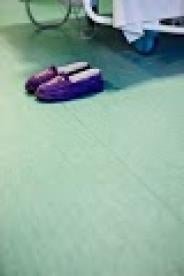Pressure ulcers, which people sometimes call bedsores, develop when a person spends too much time in the same position while lying in bed or sitting in a chair. During that prolonged time, the person’s body weight and bones create pressure by pressing the skin and soft tissue against the—harder—bed or chair surface. The pressure reduces blood supply to that area, and damages or destroys the skin tissue.
Without immediate intervention, pressure ulcers will develop, and then progress through the soft tissue located between the bone and the skin. In the most advanced stage, a pressure ulcer, which is an open wound, exposes muscle and bone, which can lead to osteomyelitis (a bone infection).
Nursing homes can prevent pressure ulcers and bedsores from developing.
Nursing home staff can detect the early changes occurring in a patient’s health status that indicate that the patient’s skin is about break down and develop a pressure ulcer—if they fail to immediately implement well-recognized and accepted interventions for avoiding pressure ulcers.
In order prevent a pressure ulcer from developing, the nursing home staff must routinely perform the process of inspecting the patient’s body from head to toe—every day. Nursing homes typically call that process the Daily Skin Assessment or, when pressure ulcers already exist, the Wound Care Assessment. This is the standard of care that nurses in the community, and nursing experts across the nation, recognize and accept when our nursing home lawyers litigate nursing home negligence cases involving pressure ulcers or bedsores. By merely inspecting the patient’s body, nursing home staff will detect the occurrence of the following early signs that indicate that a pressure ulcer will develop: skin redness (nonblancable), warm areas, spongy or hard skin, and breakdown in the skin’s top layers.
If the nursing home management adheres to the recognized and accepted standard of care for detecting those early signs, it can easily ensure that its nursing staff immediately implement the necessary interventions to prevent a pressure ulcer or bedsore from developing; and more importantly, spare the patient the unnecessary and avoidable pain, complications, and prolonged healing process that accompany a pressure ulcer or bedsore.
When the nursing home management fails to follow the recognized and accepted standard of care for detecting the early signs of a developing pressure ulcer or bedsore, it has committed nursing or nursing home negligence by failing to ensure that its staff is able to provide the necessary interventions.
That nursing home negligence will often cause the avoidable and unnecessary occurrence of a pressure ulcer or bedsore. And when left undetected and untreated, the pressure ulcer or bedsore progresses into a serious health problem for the patient. That is so, because when a patient has a break in the skin, the patient will have all of the issues associated with healing broken skin, plus the problems of caring for an open wound, including preventing life-threatening infections.


 i
i

